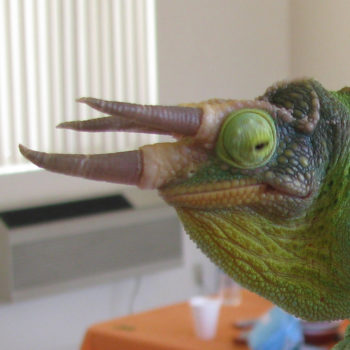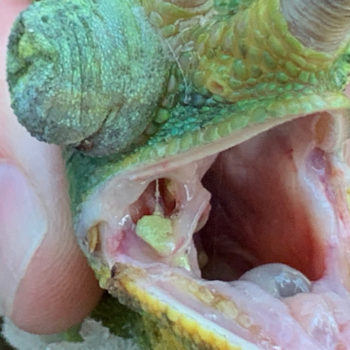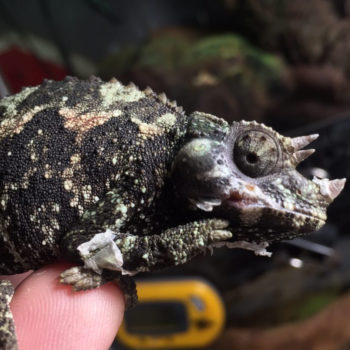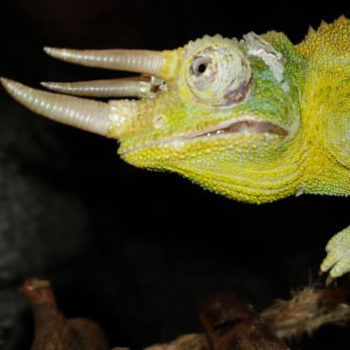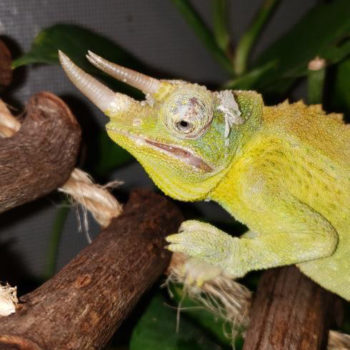Temporal Gland Infection
Description
A Temporal Gland Infection (or TGI) is where bacteria overrun a special gland in some of the Trioceros species, including the Jackson’s Chameleon. This gland is at the juncture of the top and bottom jaw lines.
The function of the temporal gland is not definitively known at this time. The gland cultures bacteria already to produce a fowl smelling substance. Though this is not easy for a human to smell unless they are seriously trying, it is thought that the substance can be used as a defense against predators or as a lure for prey.
Regardless of its final use, the temporal gland can get infected with uncontrolled bacteria just like any other part of the body.
Temporal gland infections are difficult to detect until they are advanced leading to long recovery times with veterinary assistance.
Listen to this podcast episode as Dr. Tom Greek comes on and discusses Temporal Gland Infections


Bill Strand
Ep 166: Temporal Gland Infections with Dr. Tom Greek
If you are interested in learning more about Dr. Tom Greek and his veterinary practice in Southern California, click here for contact links.
https://chameleonacademy.com/ep-166-temporal-gland-infections-with-dr-tom-greek/
Symptoms
Temporal gland infections can be identified by an uncharacteristic swelling at the temporal gland location. This is just one of the reasons why it is important to give your chameleon a quick visual exam every time you feed him or take care of the cage.
Treatment
Treating a temporal gland infection is always dual pronged. First, go see your veterinarian for antibiotics and, second, correct the condition which caused the weakened immune system to begin with.
Vet visit: A veterinarian is necessary for antibiotic treatment. Antibiotics are usually given in oral or injectable forms. The best way to go about treatment is to get the bacteria cultured and the correct antibiotic prescribed. Usually, though, the vet just prescribes a “broad spectrum” antibiotic that has a history of being effective with the most common strains. It is critical to follow through the entire antibiotic course even if improvement has been shown in order to reduce the chances of producing antibiotic resistant bacteria.
Investigation of Cause: The second part of treating an infection is to correct the cause. If the cause is not addressed then the infection will return. If the compromised immunity that allowed the bacteria to take hold was because of a substandard husbandry condition, that condition must be corrected.
Temporal Gland Infections ave a great chance of recovery if they are caught early. The more advanced the infection the harder it is to beat it back.



